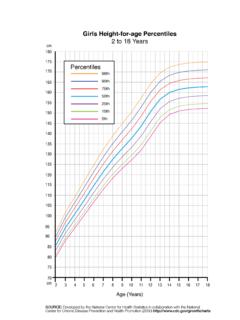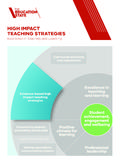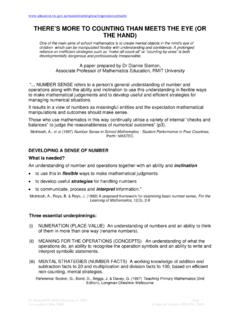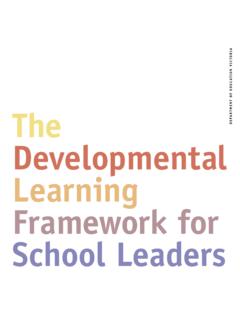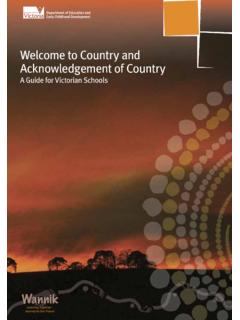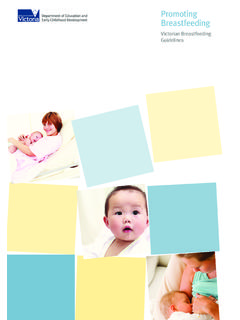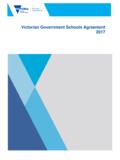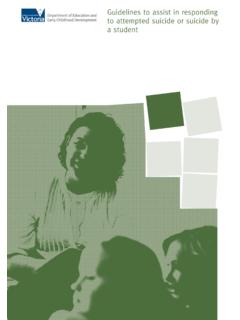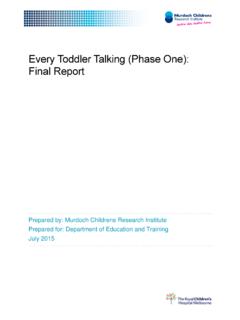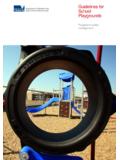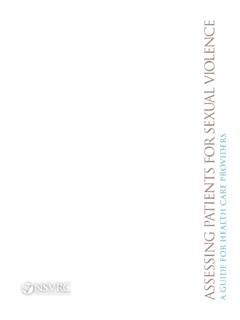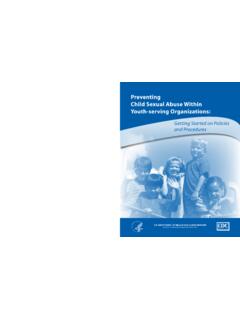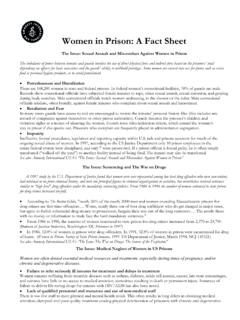Transcription of Identifying and Responding to All Forms of Abuse in ...
1 Identifying and Responding to All Forms of Abuse in Victorian Schools2 PROTECT Identifying and Responding to All Forms of Abuse in Victorian SchoolsDET 2018 AUDIENCEThis policy is for: all employees of government, Catholic and independent schools (including principals, teachers, education support staff, allied health professionals and administrative staff) all contractors, volunteers and service providers within government, Catholic and independent policy has been designed to support you to take action if you suspect, receive a disclosure, or are witness to any form of child Abuse .
2 As a professional who works with children, you play a vital and legislated role in protecting children from Abuse by Responding to and reporting any incidents, disclosures or suspicions. You are often best placed to identify signs and behaviours that may indicate that a child* has been subject to Abuse , or that a school community member or a school staff member may be a perpetrator of Abuse . ABOUTThis policy centres on Four Critical Actions for Schools: Responding to Incidents, Disclosures and Suspicions of Child Abuse (Four Critical Actions), and also includes specific advice on: Understanding your obligations (page 5) Identifying signs of child Abuse (page 14) including: Physical child Abuse Child sexual Abuse Family violence Grooming Emotional Abuse Neglect.
3 Responding to other concerns about the wellbeing of a child ( concerns about harm to a child that does not meet the definition of child Abuse ). Following the Four Critical Actions will support you to meet your legislative obligations to protect children in your care (these obligations are detailed for your reference in Understanding your obligations (page 5)). * This resource uses the term 'child' to refer to any person under the age of 18. This is Edition 2 of the resource and updates the 2016 document Identifying and Responding to All Forms of Abuse in Victorian Identifying and Responding to All Forms of Abuse in Victorian SchoolsDET 2018 Understanding Your Obligations 5 Duty of care obligations 7 Mandatory reporting 8 Criminal offences 9 Ministerial Order No.
4 870 - Child Safe Standards 10 Reportable conduct scheme 10 Organisational duty of care 12 Obligations under the Charter of Human Rights and Responsibilities 13 Identifying Signs of Child Abuse 14 Physical child Abuse 15 Child sexual Abuse 17 Grooming 20 Family violence 22 Emotional child Abuse 26 Neglect 27 Four Critical Actions for Schools: Responding to 30 Incidents, Disclosures and Suspicions of Child Abuse You MUST Act 31 Witnessing an incident 31 Forming a suspicion/reasonable belief 32 Receiving a disclosure (current student) 32 Receiving a disclosure (former student) 32 Strategies for managing a disclosure 33 Forming a reasonable belief 351: Responding to an Emergency 36 Ensuring immediate safety 36 Preserving evidence 362.
5 Reporting to Authorities 37 What will happen if I report to DHHS? 38 Reporting when the source of suspected Abuse 38 is a person within the school Reporting when the source of suspected Abuse 39 is within the family or community Table of Contents4 PROTECT Identifying and Responding to All Forms of Abuse in Victorian SchoolsDET 2018 Reporting if the incident, suspicion or disclosure relates to an international student 39 How to proceed if the principal/leadership team advises you not to report 40 Making additional reports 403.
6 Contacting Parents/Carers 41 What to do if a student returns home before DHHS/Victoria Police advice is received 434: Providing Ongoing Support 44 Working together and planning support 45 Engaging allied health and wellbeing professionals 45 Referring to external supports 47 Providing developmentally and culturally appropriate support 48 Providing support for other impacted children 49 Supporting children who are interviewed at school 49 Complying with subpoenas or court attendance 51 Responding to complaints or concerns 51 Responding to Other Concerns About the 52 Wellbeing of a Child When to report wellbeing concerns
7 To Child FIRST/Orange Door 53 When to report wellbeing concerns to Victoria Police 53 When to report wellbeing concerns to DHHS Child Protection 53 Privacy and Information Sharing 55 Information sharing with school staff 56 Information sharing with DHHS and Victoria Police 56 Information sharing with family services 58 Information sharing with the school community 58 Contact Details and More Information 59 Support roles within the Department of Education and Training 59 Support roles within Catholic education and Independent schools 61 Roles of other relevant authorities 61 Counselling/support organisations 64 Contact information 665 PROTECT Identifying and Responding to All Forms of Abuse in Victorian SchoolsDET 2018As members of a community, we all have a moral obligation to protect any child under our care and supervision from reasonably foreseeable harm.
8 As school staff members, you play an especially critical role in protecting children (including Identifying , Responding and reporting child Abuse ) and must meet a range of legal obligations to do so. The easiest way to comply with your legal and moral obligations is to remember that you must respond to and report any reasonable suspicion or belief that a child has been abused, or is at risk of being abused by following the Four Critical Actions. This includes Abuse that has, or is suspected to have, taken place within or outside of school grounds and hours.
9 This section sets out your legal obligations in further detail, including: Duty of care obligations (page 7) Mandatory reporting obligations (page 8) Criminal offences (page 9) Ministerial Order No. 870 - Child Safe Standards - Managing the risk of child Abuse in schools (page 10) Requirements to report the allegation under the Reportable Conduct Scheme (page 10) Obligations under the Charter of Human Rights and Responsibilities (page 13). Please note that for school councils operating a licensed or approved early childhood education or care service (including an Outside Hours School Care service), if an incident, disclosure or suspicion of child Abuse is formed within this service setting, schools must also comply with the National Quality Framework and its corresponding legislation.
10 Please see Identifying and Responding to All Forms of Abuse in Early Childhood Services ( ) for advice on meeting these requirements, including advice on when to contact the regulator (Quality Assessment and Regulation Division).CRITICAL INFORMATIONAll staff working with students or in schools have a moral and legal obligation and a duty of care to protect any child under their care from reasonably foreseeable harm (not just staff who are classified as mandatory reporters). As a school staff member, you must respond to any reasonable suspicion or belief that a child has been, or is at risk of being abused, following the Four Critical Actions.
